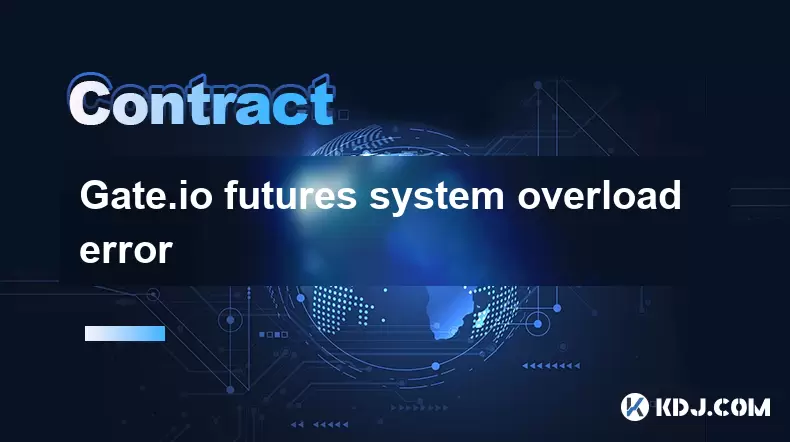-
 Bitcoin
Bitcoin $117700
-0.03% -
 Ethereum
Ethereum $3805
0.49% -
 XRP
XRP $3.098
-1.00% -
 Tether USDt
Tether USDt $1.000
0.03% -
 BNB
BNB $792.8
-1.72% -
 Solana
Solana $177.9
-1.95% -
 USDC
USDC $1.000
0.02% -
 Dogecoin
Dogecoin $0.2202
-1.55% -
 TRON
TRON $0.3278
-2.92% -
 Cardano
Cardano $0.7641
-2.43% -
 Hyperliquid
Hyperliquid $42.21
-2.68% -
 Sui
Sui $3.758
-1.58% -
 Stellar
Stellar $0.4080
-3.21% -
 Chainlink
Chainlink $17.75
-0.33% -
 Bitcoin Cash
Bitcoin Cash $591.8
4.96% -
 Hedera
Hedera $0.2561
-3.09% -
 Avalanche
Avalanche $23.34
-4.24% -
 Litecoin
Litecoin $110.7
1.96% -
 UNUS SED LEO
UNUS SED LEO $8.956
-0.01% -
 Toncoin
Toncoin $3.410
0.79% -
 Ethena USDe
Ethena USDe $1.001
0.03% -
 Shiba Inu
Shiba Inu $0.00001288
-1.82% -
 Uniswap
Uniswap $10.07
-2.06% -
 Polkadot
Polkadot $3.807
-2.27% -
 Monero
Monero $308.2
-2.15% -
 Dai
Dai $1.000
0.03% -
 Bitget Token
Bitget Token $4.521
-0.30% -
 Pepe
Pepe $0.00001134
-1.52% -
 Cronos
Cronos $0.1457
0.65% -
 Aave
Aave $274.9
-2.47%
Gate.io futures system overload error
The Gate.io futures system overload error occurs during high traffic or volatility, causing delays or failed trades — check the status page, reduce API calls, and use WebSockets to minimize disruption.
Jul 30, 2025 at 05:29 am

What Is the Gate.io Futures System Overload Error?
The Gate.io futures system overload error typically appears when the platform’s futures trading infrastructure cannot handle the volume of incoming requests. This may occur during periods of high market volatility, such as sudden price swings or major news events. When the system is overwhelmed, users might see messages like “System busy, please try again later” or “API request failed due to overload.” This is not a user-side issue but rather a temporary limitation on Gate.io’s backend systems. The error is often accompanied by delays in order execution, missing trade confirmations, or frozen UI elements in the futures trading interface.
Why Does This Error Happen on Gate.io?
Several technical and environmental factors can trigger this error:
- High-frequency trading bots submitting thousands of API requests per second.
- Sudden spikes in open interest or liquidations during volatile crypto markets.
- Backend server throttling — Gate.io may intentionally limit processing power to prevent crashes.
- Maintenance or updates — Even if not announced, internal system updates can reduce capacity.
- Geographic server load imbalance — Users in certain regions may experience overload while others do not.
In such cases, the system prioritizes stability over speed, and users might be temporarily rate-limited. The error is not a sign of account issues or API key revocation — it is a protective mechanism.
How to Check If the Error Is Platform-Wide or Local?
Before assuming it’s a personal issue, verify the scope: - Visit Gate.io Status Page — it shows real-time system health.
- Join the official Gate.io Telegram or Discord — admins often post outage alerts.
Test your API connection using a simple curl command:
curl -H "KEY: your_api_key" -H "SIGN: your_signature" https://api.gate.io/api/v4/futures/usdt/positionsIf this returns a 503 or "system overload" response, the issue is server-side.
- Try placing a small manual order via the web UI — if it fails with the same error, it’s not your internet or device.
What Immediate Steps Can You Take to Resolve It?
If the error is confirmed as platform-wide: - Pause automated trading bots — Stop scripts immediately to avoid accumulating failed requests that could lead to API bans.
- Reduce API call frequency — If you must keep bots running, lower request rates to 1–2 per second.
Switch to WebSocket feeds — Instead of polling REST APIs every second, use Gate.io’s WebSocket for real-time data. Example:
const ws = new WebSocket('wss://ws.gate.io/v4/ws/usdt'); ws.onmessage = function(event) { console.log(JSON.parse(event.data)); };- Use testnet first — Before deploying strategies on mainnet, simulate them on Gate.io Testnet to avoid contributing to live system load.
- Enable email/SMS alerts — Instead of refreshing the app constantly, set up notifications for order fills or liquidations.
How to Prevent This Error in the Future?
Proactive measures reduce the chance of encountering this error: - Implement exponential backoff in your API scripts — if a request fails, wait 1 second, then 2, then 4, etc., before retrying.
- Monitor Gate.io API rate limits — You are typically limited to 600 requests per minute per IP. Track usage via response headers like
X-RateLimit-Remaining. - Use multiple API keys — Distribute load across keys if you manage multiple strategies or portfolios.
- Avoid trading during high-volatility events — Schedule manual trades outside major crypto news (e.g., Fed announcements, BTC halvings).
- Cache data locally — Store recent order books or positions in memory instead of re-fetching them every few seconds.
Frequently Asked Questions
Q: Can I get compensation from Gate.io if I lose money due to this error?
No, Gate.io’s Terms of Service explicitly state that they are not liable for losses caused by system errors, maintenance, or overload. Always test strategies in low-risk environments.Q: Does this error affect spot trading too?
Yes, though less frequently. Spot API endpoints can also show overload errors during extreme market conditions, especially during token listings or pump-and-dump events.Q: How long does the overload usually last?
Most cases resolve within 5–30 minutes. During major market events (e.g., BTC dropping 10% in an hour), it may persist for over an hour. Monitor the status page for updates.Q: Will changing my VPS location help avoid this error?
Possibly. If your current VPS is in a region with high user density (e.g., US East), switching to EU or Asia might reduce latency and improve API reliability — but it won’t fix a global platform-wide issue.
Disclaimer:info@kdj.com
The information provided is not trading advice. kdj.com does not assume any responsibility for any investments made based on the information provided in this article. Cryptocurrencies are highly volatile and it is highly recommended that you invest with caution after thorough research!
If you believe that the content used on this website infringes your copyright, please contact us immediately (info@kdj.com) and we will delete it promptly.
- Retail, Crypto, Visibility: Decoding the Signals in Today's Market
- 2025-07-31 12:31:08
- Bitcoin, Altcoin Selloff, and the FOMC Decision: A Crypto Market Rollercoaster
- 2025-07-31 12:35:33
- Cold Wallet vs. MetaMask: A Crypto Wallet Revolution?
- 2025-07-31 10:30:57
- Bitcoin Casinos in 2025: Instant Payouts and Welcome Bonuses
- 2025-07-31 10:50:33
- Meme Coins in 2025: Token Burns and the Quest for Moonshots
- 2025-07-31 10:50:33
- Unlocking Value: A Deep Dive into Random Year 1 oz Krugerrand Gold Coins
- 2025-07-31 10:57:21
Related knowledge

Why is my Bitstamp futures position being liquidated?
Jul 23,2025 at 11:08am
Understanding Futures Liquidation on BitstampFutures trading on Bitstamp involves borrowing funds to open leveraged positions, which amplifies both po...

How to report Bitstamp futures for taxes?
Jul 30,2025 at 08:35am
Understanding Bitstamp Futures and Taxable EventsWhen trading Bitstamp futures, it’s essential to recognize that these financial instruments are treat...

Does Bitstamp offer inverse contracts?
Jul 23,2025 at 01:28pm
Understanding Inverse Contracts in Cryptocurrency TradingIn the realm of cryptocurrency derivatives, inverse contracts are a specific type of futures ...

What is the difference between futures and perpetuals on Bitstamp?
Jul 27,2025 at 05:08am
Understanding Futures Contracts on BitstampFutures contracts on Bitstamp are financial derivatives that allow traders to speculate on the future price...

How to find your Bitstamp futures trade history?
Jul 23,2025 at 08:07am
Understanding Bitstamp and Futures Trading AvailabilityAs of the current state of Bitstamp’s service offerings, it is critical to clarify that Bitstam...

Can I use a trailing stop on Bitstamp futures?
Jul 23,2025 at 01:42pm
Understanding Trailing Stops in Cryptocurrency TradingA trailing stop is a dynamic type of stop-loss order that adjusts automatically as the price of ...

Why is my Bitstamp futures position being liquidated?
Jul 23,2025 at 11:08am
Understanding Futures Liquidation on BitstampFutures trading on Bitstamp involves borrowing funds to open leveraged positions, which amplifies both po...

How to report Bitstamp futures for taxes?
Jul 30,2025 at 08:35am
Understanding Bitstamp Futures and Taxable EventsWhen trading Bitstamp futures, it’s essential to recognize that these financial instruments are treat...

Does Bitstamp offer inverse contracts?
Jul 23,2025 at 01:28pm
Understanding Inverse Contracts in Cryptocurrency TradingIn the realm of cryptocurrency derivatives, inverse contracts are a specific type of futures ...

What is the difference between futures and perpetuals on Bitstamp?
Jul 27,2025 at 05:08am
Understanding Futures Contracts on BitstampFutures contracts on Bitstamp are financial derivatives that allow traders to speculate on the future price...

How to find your Bitstamp futures trade history?
Jul 23,2025 at 08:07am
Understanding Bitstamp and Futures Trading AvailabilityAs of the current state of Bitstamp’s service offerings, it is critical to clarify that Bitstam...

Can I use a trailing stop on Bitstamp futures?
Jul 23,2025 at 01:42pm
Understanding Trailing Stops in Cryptocurrency TradingA trailing stop is a dynamic type of stop-loss order that adjusts automatically as the price of ...
See all articles

























































































